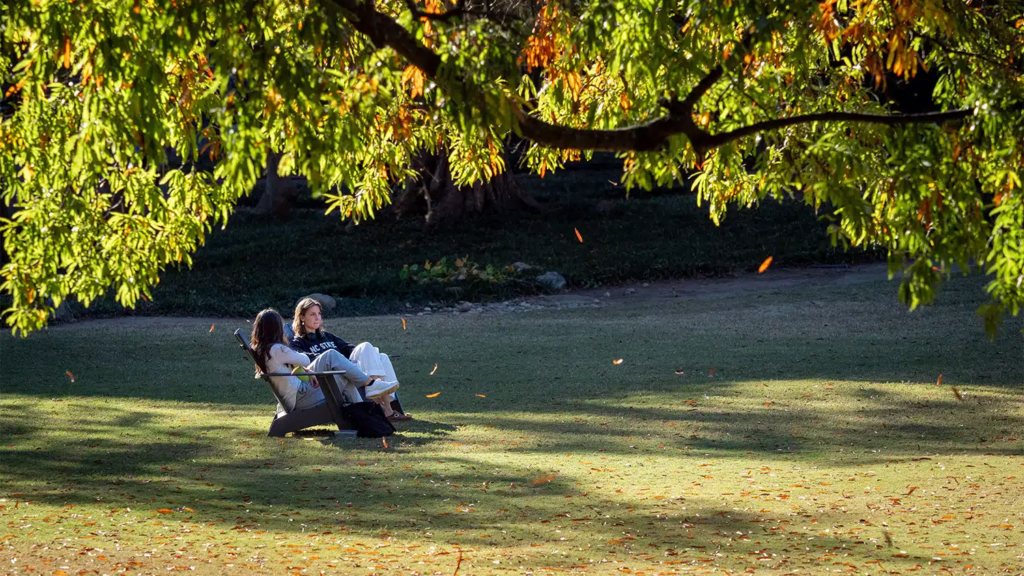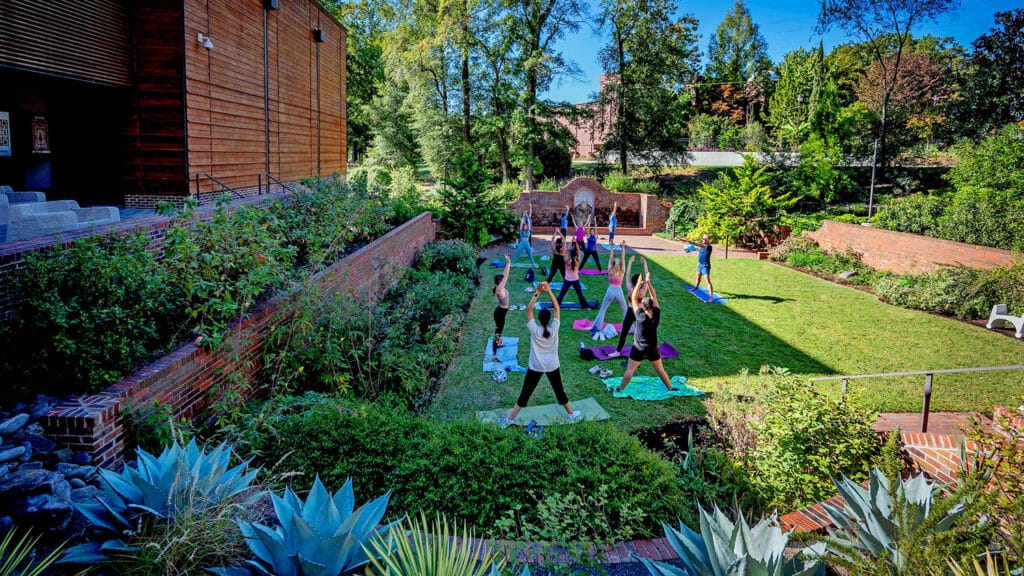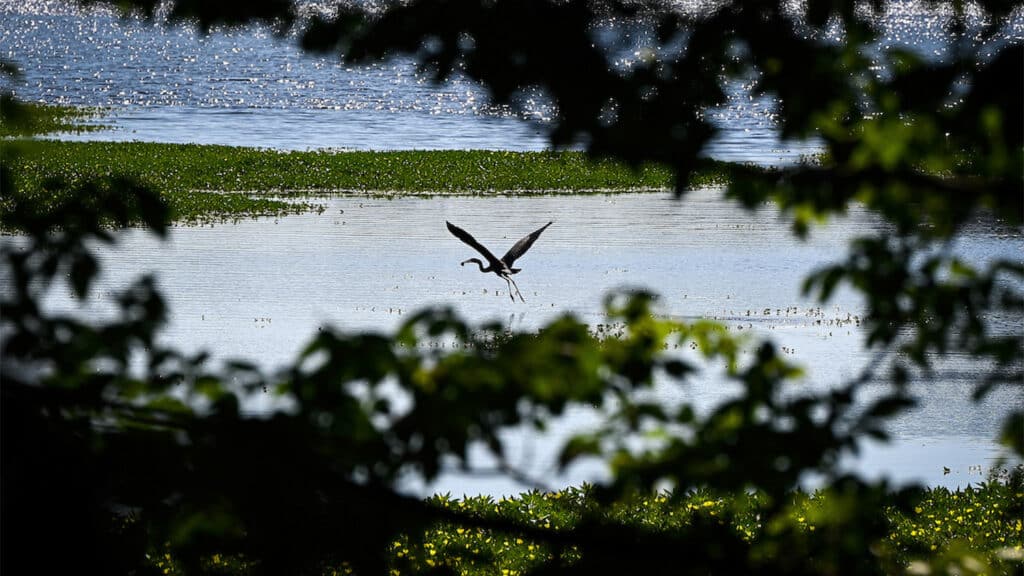Digital Greenspaces Map Promotes Wellness
The NC State Greenspaces Map helps the NC State community use on-campus areas to relax, socialize, study, exercise and more.

A new digital map makes it easy for NC State faculty, staff and students to explore 55 green spaces on campus as a way to support their mental, physical and social wellness.
A group within the Student Mental Health Task Force collaborated with university partners to create the NC State Greenspaces Map, which divides campus green spaces into seven functional categories: relax, socialize, study and teach, eat, walk and bike, sports, and explore.
“It’s important that we have spaces where we can be together and spaces that support healthy living,” said Aaron Hipp, a member of the task force and a professor of parks, recreation and tourism management. “We are super fortunate at NC State to have a large campus with many spaces that support socializing and relaxing.”
In the project’s early stages, Hipp connected with University Landscape Architect Tom Skolnicki, whose team was examining ways to improve landscapes throughout campus. The goal of the map project is to increase access to and awareness of spaces that support psychological, psychosocial and mental health.
“This initiative made our planning staff think about how we can improve access to a range of outdoor spaces, from courtyards to meadows to woodlands, no matter where you are on campus,” Skolnicki said.



Hipp hopes that students, faculty and staff use the map to participate in health-promoting activities, such as meeting friends at the JC Raulston Arboretum or bicycling at Lake Raleigh Woods. The map includes campus landmarks like the Court of North Carolina and Wolf Plaza as well as lesser-known areas like the Weisiger-Brown Woods on Central Campus and Kendall Circle on Centennial Campus.
“There are these freely available spaces that you can go with a friend, go study, go for a run or throw a football around,” Hipp said. “We want students, faculty and staff to be aware of the variety of spaces across campus.”
Skolnicki said NC State, with its 2,100 acres of land, offers outdoor experiences for everyone, regardless of whether they come from a big city or a small town. The map, he said, helps people find a change of scenery.
“Sometimes we tend to stay in the building or neighborhood where we have most of our classes or where we work,” he said. “I hope that this map makes more people aware of the diversity of landscapes available on campus and encourages them to explore what campus has to offer.”
This article was originally published in NC State News.
- Categories:


